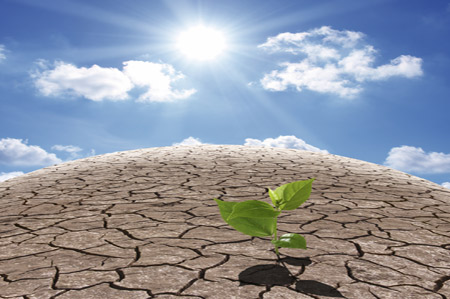Testing Times: Drought Means Watching Forage, Water
Category: Drought
 (Ag Week) – They’re far from the drought, but North Dakota State University Veterinary Diagnostic Laboratory chemists on the Fargo campus are in the middle of the action, running tests for ranchers who want to know their animals are getting safe feed and water.
(Ag Week) – They’re far from the drought, but North Dakota State University Veterinary Diagnostic Laboratory chemists on the Fargo campus are in the middle of the action, running tests for ranchers who want to know their animals are getting safe feed and water.
Brett Webb, director of the lab, say tests are about six-fold from non-drought years. Excessive nitrates in feed or water can lead to cattle losses or abortions. Typically, the lab does 20 to 30 of the tests in non-drought years. So far this year, they have done about 300 for water and about the same for forages.
“In typical years it’s fairly rare to see high nitrates,” Webb says. One of the counter-moves is to dilute the high-nitrate material with better hay, but that becomes less available. “Efficiency in handling tests will improve when a new laboratory is opened on campus later this year.”
Michelle Mostrom, a veterinary toxicologist with the North Dakota State University Diagnostic Laboratory, says the laboratory has been busy testing water for total dissolved solids sulfates and nitrates. The total dissolved solids salts should be less than 5,000 ppm for most classes of grazing livestock.
Mostrom says a major concern is the sulfates. Water for calves should be less than 500 ppm and less than 1,000 ppm for adult cattle. Hot weather and nutrients in water supplies for cattle can make water a breeding ground for “blue-green algae.” The algae, also known as cyanobacteria, can be toxic to livestock. The lab uses microscopes to confirm blue-green algae, which can be indicated by a distinctive oily smell.
Carl Dahlen, an NDSU Extension livestock specialist, says cattle consuming forages with high nitrate loads is bad news.
“A chemical reaction converts those nitrates into ammonia, and what we’re actually having is an overload of ammonia,” he says. This interrupts blood flow and can induce abortions because of lack of blood flow into a fetus.
Cyanide toxins are associated with increased plantings of sorghum and Sudan grass.
Miranda Meehan, an NDSU Extension livestock environmental stewardship specialist, says any grains that are drought-stressed are at high risk for increased nitrate levels and a potential for nitrate poisoning. There haven’t been many tests so far that have come back at levels where the grain straw can’t be fed at all, but often they must be diluted into feeds that are lower in nitrates.
“We do recommend testing before harvesting, so you know before you put the time and money into harvesting that crop,” she says. Many younger producers haven’t seen the major droughts they’re going through now. “It’s a learning curve of management strategies and issues we have to keep an eye on.”
Some ranchers have alternative water supplies from rural water systems. Others areas are looking to groundwater that are low in sulfates and total dissolved solids.

